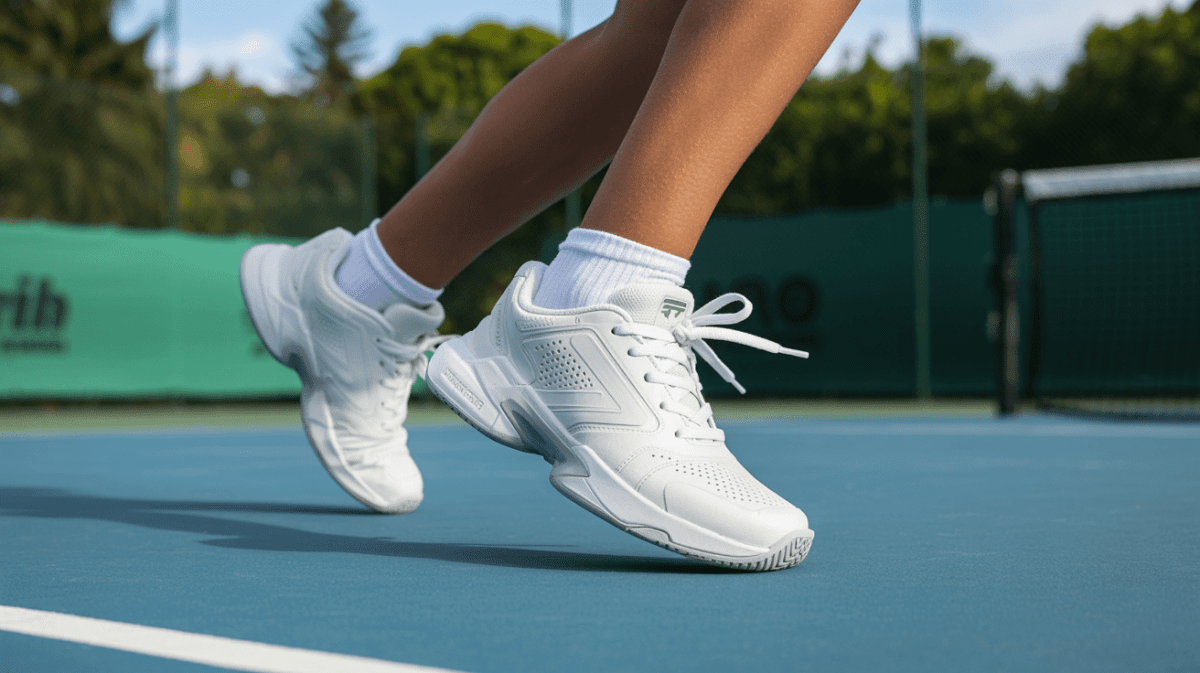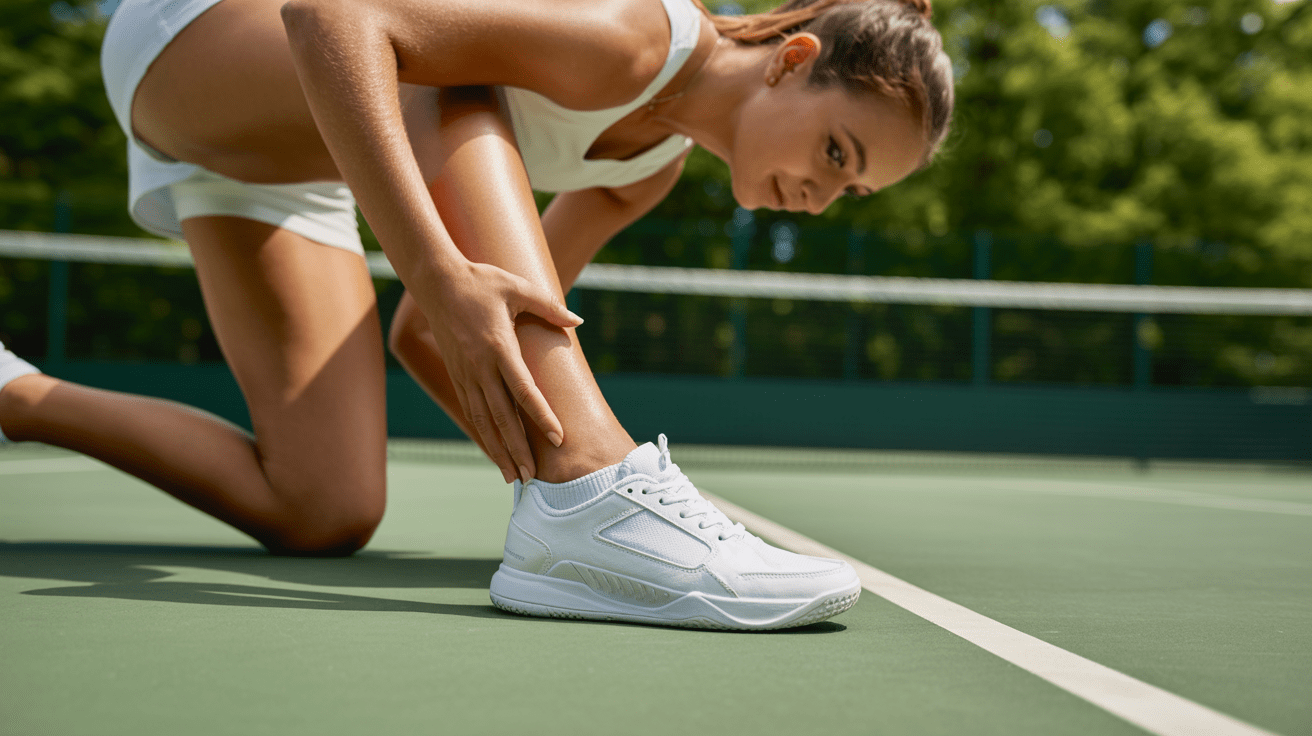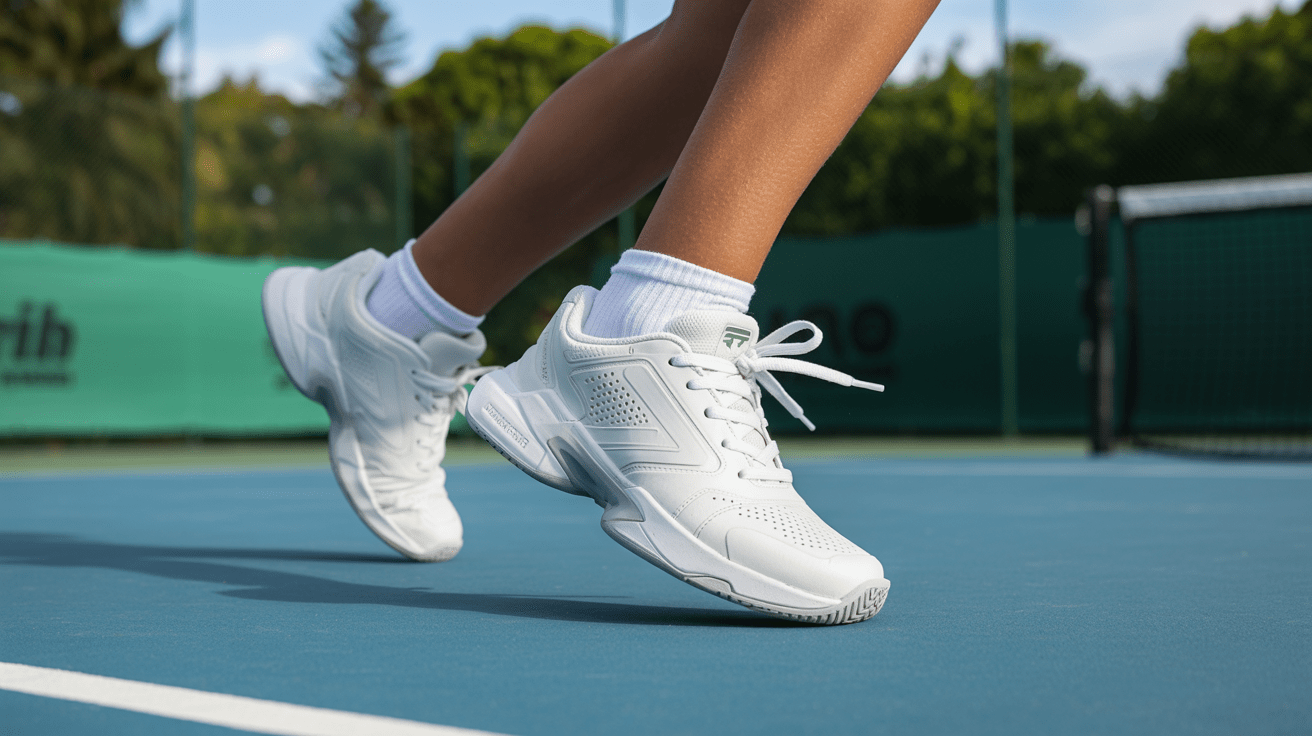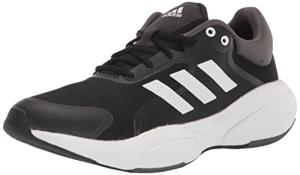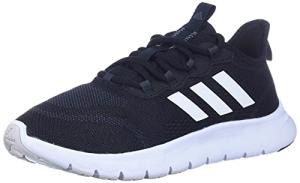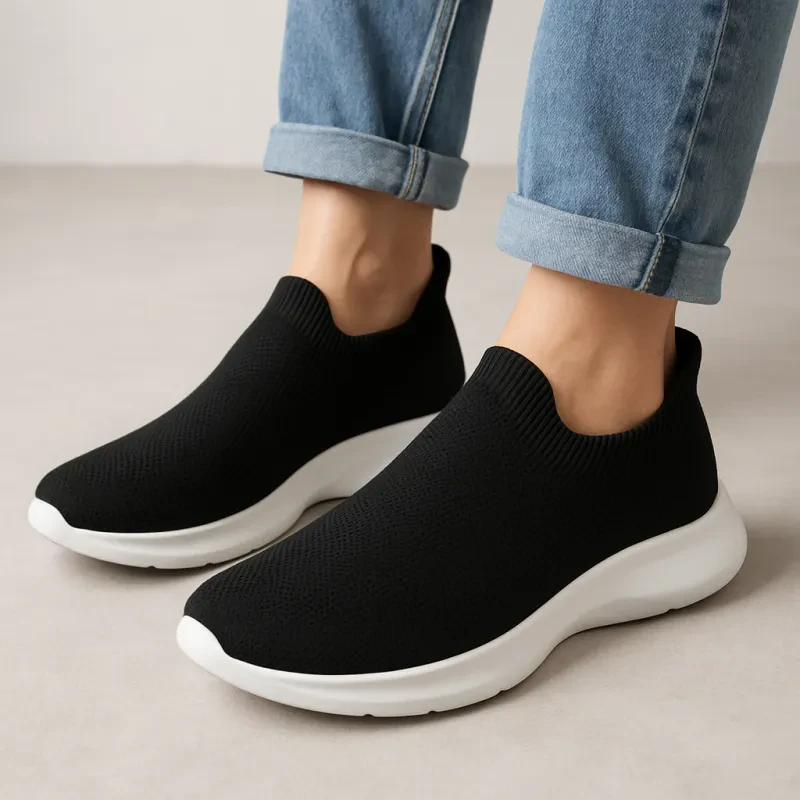Breaking in tennis shoes is essential to ensure optimal comfort and durability. By following the proper techniques and methods, you can make your tennis shoes feel like a perfect fit from the first wear. In this article, we provide expert tips and step-by-step guidance on how to break in your tennis shoes effectively. Whether you're a casual player or a professional athlete, these tips will help you achieve the utmost comfort and performance in your tennis shoes.
Key Takeaways:
- The right tennis shoe fit is essential for comfort and performance.
- Gradually increase wear time to allow your feet to adjust.
- Consider advanced techniques like using shoe stretchers or the moisture and heat method.
- Prevent blisters and discomfort by choosing the right socks and practicing proper maintenance.
- Know when it's time to replace your tennis shoes.
Understanding the Importance of Breaking in New Tennis Shoes
Breaking in new tennis shoes is crucial for several reasons. Firstly, it allows the shoes to mold to the shape of your feet, providing a customized and comfortable fit. Secondly, it helps prevent blisters and discomfort by softening the materials and reducing friction. Thirdly, breaking in tennis shoes enhances their performance and durability, ensuring they can withstand the demands of the sport. Understanding the importance of breaking in new tennis shoes will motivate you to invest time and effort into this process.
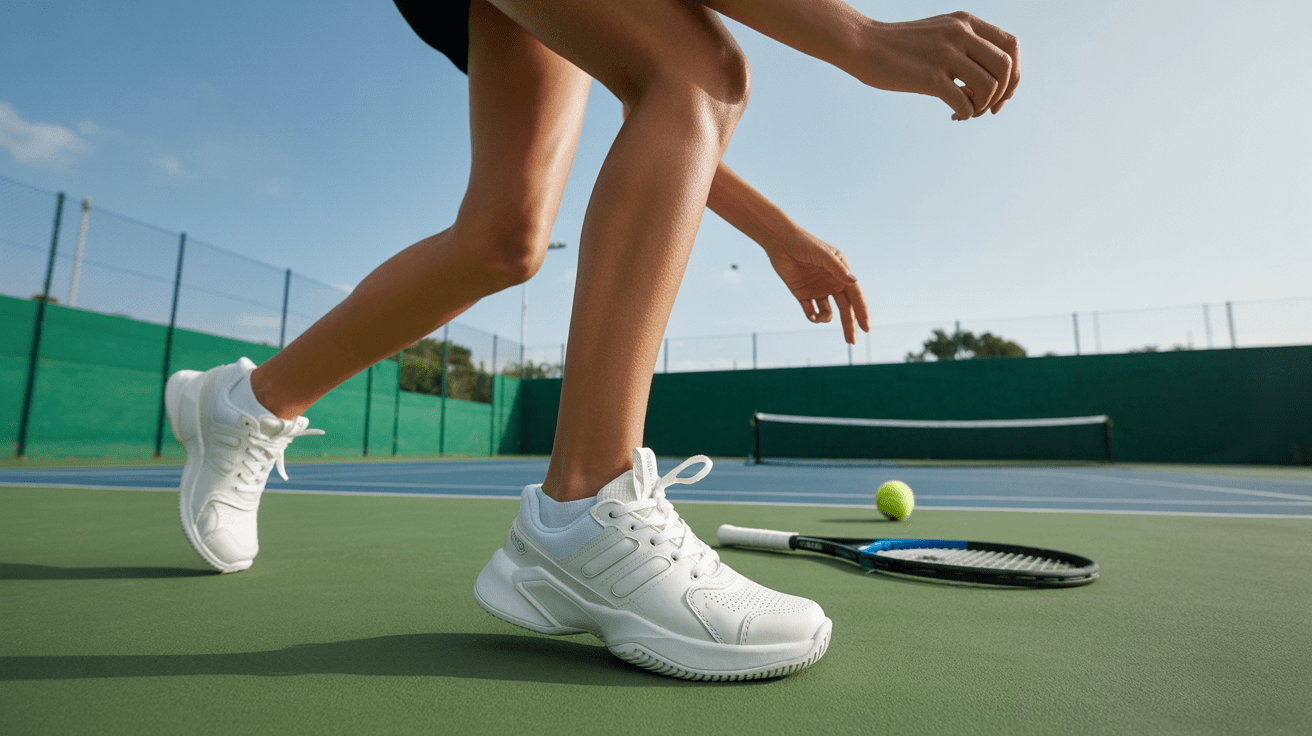
The Break In Tennis Shoes Method: A Step-by-Step Guide
Breaking in tennis shoes involves a methodical approach for optimal results. By following this step-by-step guide, you can ensure that your tennis shoes provide the perfect fit and maximum comfort.
Wearing Your Tennis Shoes at Home
The first step in breaking in your tennis shoes is to wear them at home. This allows your feet to adjust to the shoes gradually in a controlled environment. By wearing your tennis shoes around the house, you can get your feet accustomed to the new shoes without the pressure and stress of playing on the court.
Start by wearing your tennis shoes for short periods while performing everyday activities at home. This will help your feet adapt to the shoes and soften the materials. Focus on walking and moving naturally to allow the shoes to mold to the shape of your feet.
It's important to note that wearing tennis shoes at home should be done on clean, indoor surfaces to avoid dirt and damage to the shoes. Avoid wearing them outside or on rough surfaces that could potentially cause premature wear and tear.
Gradually Increasing Wear Time
After wearing your tennis shoes at home for a few days, you can gradually increase the wear time. Start by wearing them for short periods of time during light activities on the court, such as practicing serves or hitting balls against a wall.
As your feet become more comfortable in the shoes, gradually extend the duration of wear. Increase the intensity of your activities, such as playing practice matches or participating in drills, while still being mindful of your feet's comfort level.
It's important to listen to your body and give your feet time to rest if you experience any discomfort or pain. Pushing through the pain can lead to blisters and other foot injuries. Take breaks and allow your feet to recover before continuing to break in your tennis shoes.
Remember, the goal is to gradually increase the wear time while giving your feet the necessary time to adapt to the shoes. This gradual approach will ultimately result in a customized fit and maximum comfort.

By following this step-by-step guide, you can effectively break in your tennis shoes and ensure optimal comfort and performance on the court.
Choosing the Right Tennis Shoe Fit for Optimal Comfort
Selecting the right tennis shoe fit is crucial for both comfort and performance. Ill-fitting shoes can lead to discomfort, blisters, and even injuries, hindering your performance on the court. When choosing tennis shoes, it's important to consider several factors to ensure the perfect fit.
Firstly, take into account your foot size. Different brands and models may have variations in sizing, so it's essential to try on multiple sizes to find the one that provides the best fit. Pay attention to the length and width of the shoes, ensuring they accommodate your feet comfortably without being too tight or too loose.
Another important factor to consider is your arch type. Whether you have high arches, flat feet, or a neutral arch, finding the right shoe with proper arch support can greatly enhance your comfort and stability during gameplay.
Additionally, consider your playing style when choosing tennis shoes. If you're an aggressive player who frequently moves and slides on the court, look for shoes with excellent traction and durability. On the other hand, if you prefer a more cushioned and supportive feel, opt for shoes that offer ample cushioning in the midsole and heel areas.
When trying on tennis shoes, pay attention to key features that contribute to optimal comfort and support. Look for shoes with adequate cushioning, especially in high-impact areas such as the heel and forefoot. Ensure that the shoes provide sufficient stability and minimize excessive movement to prevent injuries.
Lastly, don't hesitate to seek professional advice. A knowledgeable salesperson or podiatrist can provide valuable insights and recommendations based on your specific foot type and needs. Consulting with an expert can help you make a well-informed decision when choosing the right tennis shoe fit.
By taking into account factors such as foot size, arch type, and playing style, and considering key features like cushioning and stability, you can find the perfect fit for optimal comfort and performance in your tennis shoes.
Advanced Techniques for Breaking in Tennis Shoes Quickly
If you're looking to expedite the break-in process of your tennis shoes, there are advanced techniques you can try. These techniques can help you achieve maximum comfort and performance in a shorter amount of time.
Using Shoe Stretchers
One effective method for breaking in tennis shoes quickly is by using shoe stretchers. These devices are designed to expand the width and length of your shoes, allowing them to accommodate your feet more comfortably. Simply insert the shoe stretchers into your tennis shoes and gradually adjust them to stretch the shoes. Leave the stretchers in place for several hours or overnight, and you'll notice a significant improvement in the fit of your shoes.
Moisture and Heat Method
Another advanced technique for breaking in tennis shoes quickly is the moisture and heat method. This method involves using moisture and heat to soften the materials of your shoes, making them more pliable and easier to break in.
One way to use the moisture and heat method is by using a hairdryer. Put on a pair of thick socks and wear your tennis shoes. Use the hairdryer on a hot setting and direct the heat toward the areas of the shoes that feel tight or uncomfortable. As the heat warms up the materials, gently flex and move your feet to help the shoes stretch and mold to your feet. Repeat this process for a few minutes on each area that needs stretching.
Alternatively, you can try the freezing method. Fill resealable bags with water, leaving some room for expansion. Insert the bags into your tennis shoes, ensuring they cover the areas that need stretching. Place the shoes in the freezer overnight. As the water freezes and expands, it will stretch the shoes. Remove the shoes from the freezer and let them thaw before trying them on.
Both of these techniques can speed up the break-in time of your tennis shoes, making them more comfortable sooner.
Remember to use these advanced techniques with caution and follow the proper instructions to avoid damaging your tennis shoes.
Preventing Blisters and Discomfort During the Break-In Process
Blisters and discomfort can be common issues when breaking in new tennis shoes. However, by taking the right precautions, you can minimize these problems and ensure a more comfortable experience. Here are some tips to help you prevent blisters and minimize discomfort during the break-in process:
- Wear thick socks: Thick socks provide an extra layer of cushioning and can help reduce friction, minimizing the chances of blisters.
- Use blister prevention products: Applying blister prevention products, such as adhesive bandages or blister cushions, to potential problem areas can help protect your skin and prevent blisters from forming.
- Apply moleskin or bandages: If you notice any areas in your tennis shoes that consistently rub against your skin, you can apply moleskin or bandages to create a protective barrier and reduce friction.
- Avoid excessive wear time: It's important to gradually increase the wear time of your tennis shoes. Avoid wearing them for extended periods initially, as this can lead to excessive rubbing and discomfort.
- Gradually increase wear: Start by wearing your tennis shoes for short periods and gradually increase the duration. This allows your feet to adjust to the shoes more comfortably and reduces the risk of blisters.
By following these tips, you can minimize the likelihood of blisters and discomfort during the break-in process, ensuring a smoother transition to your new tennis shoes.
Best Practices for Tennis Shoe Durability and Maintenance
To ensure the longevity of your tennis shoes, it's important to practice proper maintenance. Regular cleaning and care, along with understanding wear patterns, can help preserve their appearance and functionality.
Regular Cleaning and Care
Regularly cleaning and caring for your tennis shoes is essential to maintain their durability and performance. Follow these tips to keep your shoes in top condition:
- After each use, wipe down your shoes with a damp cloth to remove dirt and debris.
- Remove the shoelaces and wash them separately, either by hand or in a mesh bag in the washing machine.
- For fabric or synthetic uppers, gently scrub any stains using a soft brush and mild detergent. Avoid scrubbing too vigorously to prevent damage.
- Avoid machine washing leather or suede tennis shoes, as it can cause the materials to shrink or become misshapen.
- Allow your shoes to air dry naturally, away from direct heat sources or sunlight.
- Store your tennis shoes in a cool, dry place to prevent moisture buildup and the growth of mold or mildew.
By regularly cleaning and caring for your tennis shoes, you can extend their lifespan and ensure optimal performance on the court.
Understanding Wear Patterns
Understanding the wear patterns on your tennis shoes can provide valuable insights into their condition and help you address any potential issues. By examining the wear patterns, you can identify areas of excessive wear and take appropriate measures to prevent further damage.
Common wear patterns on tennis shoes include:
| Wear Pattern | Possible Cause | Remedial Action |
|---|---|---|
| Uneven Sole Wear | Supination or pronation | Consider orthotic inserts or consult a podiatrist |
| Excessive Toe Wear | Dragging toes during tennis strokes | Improve footwork and technique |
| Heel Cup Wear | Heel striking while running or excessive lateral movement | Focus on proper running form and footwork |
| Upper Creasing | Too tight or loose shoe fit | Ensure proper shoe fit and consider lace adjustments |
| Insole Wear | Repeated impact and pressure | Consider replacing insoles or using cushioned inserts |
By understanding the wear patterns on your tennis shoes, you can take proactive measures to address any issues and prolong their durability.
Tips for Stretching Tennis Shoes for a Custom Fit
Sometimes, tennis shoes may feel slightly tight or uncomfortable even after the break-in process. In such cases, stretching the shoes can help achieve a custom fit. Here are some techniques you can try:
1. Using a shoe stretcher: Insert a shoe stretcher into your tennis shoes, following the device's instructions. Gradually adjust the stretcher to stretch the width and length of the shoes, allowing them to accommodate the shape of your feet.
2. Heating the shoes with a hairdryer: Wear thick socks and put on your tennis shoes. Use a hairdryer on medium heat to warm the shoes, focusing on the tight spots. As the heat softens the material, gently flex your feet and wiggle your toes to help the shoes stretch.
3. Manually stretching tight spots: If you have specific areas that feel tight, you can use the back of a spoon or another rounded object to stretch those spots. Place the rounded end of the spoon inside the shoe and apply pressure to stretch the material. Repeat this process until the desired fit is achieved.
These tips can help you make your tennis shoes more comfortable and achieve a personalized fit for maximum enjoyment on the court.
The Role of Socks in the Tennis Shoe Break-In Process
When it comes to breaking in your tennis shoes, the right choice of socks plays a crucial role in enhancing comfort and preventing blisters. Socks with adequate cushioning provide an additional layer of support and padding, reducing the risk of discomfort during gameplay. To ensure optimal cushioning, consider selecting socks that are specifically designed for tennis or athletic activities. These socks are usually made with materials that offer superior cushioning and impact absorption, promoting a more comfortable experience on the court.
Choosing the Right Socks for Cushioning
When selecting socks for tennis shoe break-in, look for the following features:
- Padding: Opt for socks with extra padding in the heel and toe areas to provide cushioning where it's needed the most.
- Arch Support: Choose socks with built-in arch support to enhance stability and reduce strain on the feet.
- Moisture-Wicking: Look for socks that are made of moisture-wicking materials, such as polyester or nylon, to keep your feet dry and comfortable during intense gameplay.
By investing in high-quality socks that offer ample cushioning, arch support, and moisture-wicking properties, you can enhance the overall break-in experience and maximize comfort during long hours on the court.
The Impact of Sock Thickness on Fitting
Another consideration when choosing socks for tennis shoe break-in is the thickness of the socks. The thickness of your socks can have an impact on the fitting of your tennis shoes. Thicker socks can fill in any extra space in the shoes, providing a snugger fit and minimizing the risk of blisters. On the other hand, if you prefer a bit more room in your shoes, thinner socks may be more suitable.
It's essential to strike a balance between comfort and fit when selecting sock thickness. Experiment with different sock options to find the right balance that works best for you. Consider factors such as the width and shape of your feet, the specific design of your tennis shoes, and your personal preferences.
To summarize, choosing the right socks for tennis shoe break-in can greatly enhance your comfort level and prevent discomfort during gameplay. Look for socks that offer adequate cushioning and support, and consider the impact of sock thickness on shoe fitting. By taking these factors into account, you can ensure a more enjoyable and comfortable experience on the tennis court.
When to Replace vs. Break In Assessing Your Tennis Shoes
While breaking in tennis shoes is essential, it's equally important to know when it's time to replace them. Assessing the condition of your tennis shoes and recognizing signs of wear and tear is crucial. If the shoes are severely worn, have lost their cushioning or support, or exhibit significant structural damage, it may be time to replace them. Balancing between breaking in and replacing tennis shoes ensures you have the best performance and comfort on the court.
When deciding to replace or break your tennis shoes, carefully evaluate the following factors:
- Overall Condition: Inspect the physical condition of your tennis shoes, paying attention to signs of wear and tear. Look for visible damage such as holes, worn-out soles, or separated seams. These are indications that your shoes may not be able to provide the necessary support and protection.
- Cushioning and Support: Consider the level of cushioning and support provided by your tennis shoes. Over time, the cushioning material can deteriorate, resulting in a less comfortable and supportive fit. If you no longer feel the necessary impact absorption or stability, it may be time to replace your shoes.
- Mileage and Usage: Take into account the amount of mileage and frequency of use your tennis shoes have endured. Regular players who engage in intense gameplay may need to replace their shoes more frequently compared to occasional players. Keep track of your shoe's usage to determine when they have reached their limit.
- Comfort and Performance: Assess how your tennis shoes feel during gameplay. If you experience discomfort, pain, or decreased performance, it could be a sign that your shoes are no longer providing the necessary support or fit. These issues can negatively impact your foot health and overall performance on the court.
Tip: It's always a good practice to consult with a professional or experienced tennis shoe specialist who can help assess the condition of your shoes and provide expert advice on whether it's time to replace them.
Remember, maintaining the right balance between breaking in and replacing your tennis shoes is crucial for optimal comfort, injury prevention, and performance. By regularly assessing the condition of your shoes and recognizing signs of wear and tear, you can make informed decisions that ensure you have the best tennis experience.
Conclusion
Breaking in tennis shoes is an essential process that allows you to achieve optimal comfort and durability. By following expert tips and techniques, you can effectively break in your tennis shoes and experience the perfect fit from the very first wear. It is crucial to choose the right fit by considering factors such as foot size, arch type, and playing style. Gradually increasing wear time and utilizing advanced techniques, like using shoe stretchers or the moisture and heat method, can expedite the break-in process.
To enhance your experience further, it is important to prevent blisters and discomfort during the break-in process. Wearing thick socks, using blister prevention products, and applying moleskin or bandages to potential problem areas can significantly minimize friction and protect your skin. Proper maintenance and care, such as regular cleaning and understanding wear patterns, contribute to the durability and longevity of your tennis shoes.
In conclusion, breaking in tennis shoes is a necessary step to ensure optimal performance and comfort on the court. By following the guidance provided in this article, you can establish a comfortable and long-lasting relationship with your tennis shoes. Remember to select the right fit, gradually break in your shoes, and take preventive measures for blisters and discomfort. With these techniques, you can enjoy the perfect fit and maximize the performance of your tennis shoes.
FAQ
Why is it important to break in new tennis shoes?
Breaking in new tennis shoes allows them to mold to your feet for a customized and comfortable fit. It also helps prevent blisters, discomfort, and improves the shoes' performance and durability.
How can I break in my tennis shoes effectively?
Start by wearing your tennis shoes at home to adjust your feet to them gradually. Then, gradually increase the wear time by wearing the shoes for short periods and extending the duration over time.
How do I choose the right tennis shoe fit?
Consider your foot size, arch type, and playing style when selecting tennis shoes. Look for shoes that provide adequate support, cushioning, and stability.
Are there any advanced techniques to break in tennis shoes quickly?
Yes, you can try using shoe stretchers to expand the width and length of your shoes or use the moisture and heat method, which involves using a hairdryer or freezing the shoes with resealable bags of water overnight.
How can I prevent blisters and discomfort during the break-in process?
Wear thick socks, use blister prevention products, and apply moleskin or bandages to potential problem areas. Gradually increase wear time and avoid excessive rubbing and discomfort.
What are the best practices for maintaining the durability of tennis shoes?
Regularly clean and care for your tennis shoes by wiping them down and removing dirt and debris. Also, pay attention to wear patterns to identify any potential issues with the shoes.
How can I stretch my tennis shoes for a custom fit?
You can use shoe stretchers, wear thick socks while heating the shoes with a hairdryer, or manually stretch tight spots with the back of a spoon.
What role do socks play in the break-in process of tennis shoes?
The right socks can provide additional cushioning, prevent blisters, and impact the fitting of tennis shoes. Choose socks made of moisture-wicking materials and select the appropriate thickness for your desired fit.
How do I know when to replace my tennis shoes?
Assess the condition of your tennis shoes and look for signs of severe wear, loss of cushioning or support, or significant structural damage. When the shoes no longer provide adequate functionality, it may be time for a replacement.
